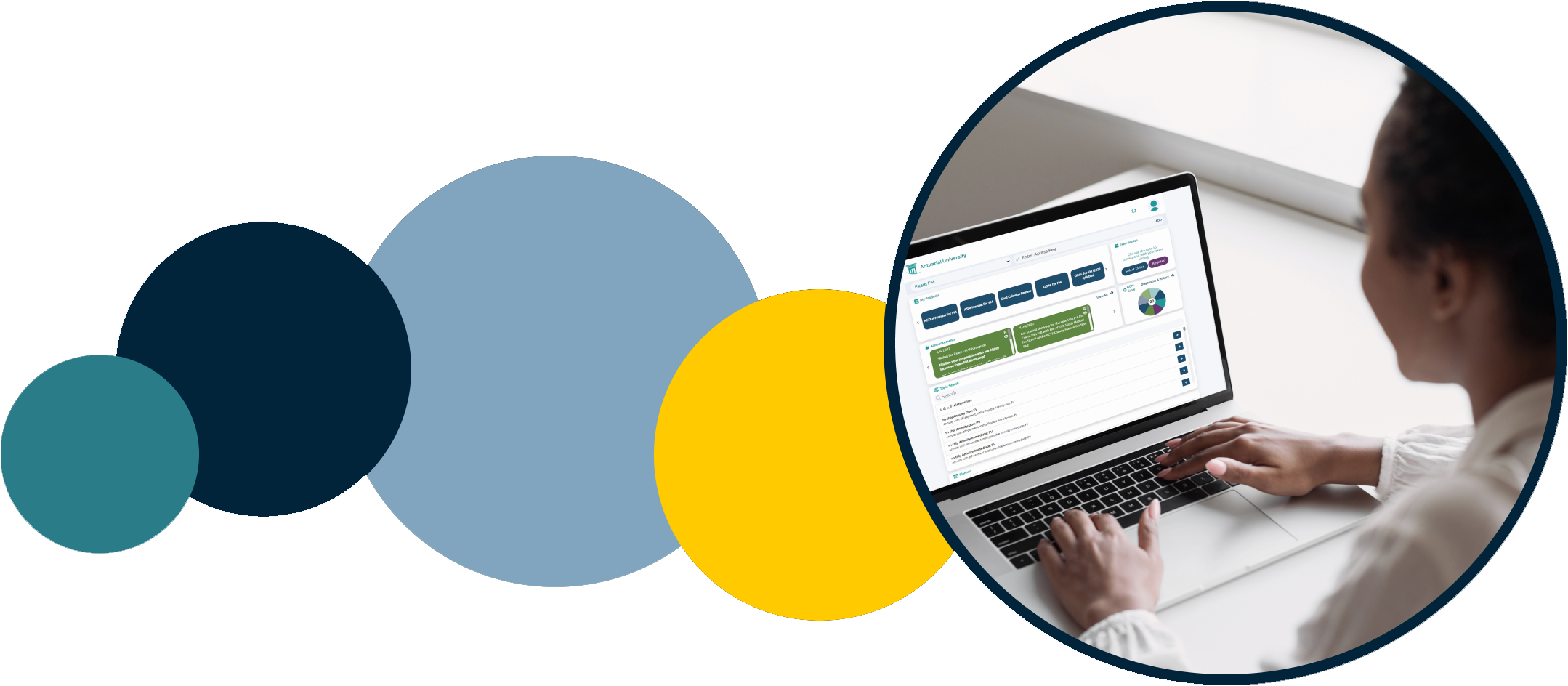Actuaries and Data Scientists are more similar than you think
Uncover the distinctive attributes and areas of convergence within these two professions. The data-driven insights brought by data scientists combined with the risk assessment expertise of actuarial scientists create a powerhouse collaboration.
Bill Marella: Hi, my name is Bill Marella. I'm the CEO of ACTEX Learning, and today I am joined by Robert Eaton. Robert is a principal and consulting actuary at Milliman, and he's also an SOA board member and an ACTEX author. Welcome, Robert.
Robert Eaton: Thank you so much. I'm really glad to be here.
BM: Today's topic is going to focus on actuarial science and data science. Robert's going to address some of the roles that actuaries have that are unique from data science or data science type roles.
RE: Let me jump into this and describe a little bit of what I see the role of the actuary as and the role of the data scientists as, Bill, and distinguish those, but also share where they overlap. We actuaries have:
- a certain technical skill set,
- a mathematical mindset,
- a problem-solving attitude,
And we use those skills to improve our businesses and to help our shareholders and our stakeholders.
Really actuaries become masters, in the end, of domain knowledge for a lot of insurance companies. They're held in very high esteem at insurance companies and in all kinds of markets around them. That happens by establishing as a profession, a whole lot of trust among the public, insurance companies, players, and markets. That trust comes from the professionalism that we imbue in all actuaries, through the code of conduct, all of the precepts, as well as the actual standards of practice, which are understood to be followed by all practicing actuaries.
Those are some of the reasons why we have that trust and that strong reputation. A lot of our skills, though, a lot of the skill set that we pride ourselves on: the mathematical prowess, the algorithmic know-how, data scientists share those as well. And we have partnered with a lot of data scientists in insurance to where, oftentimes at a large insurer, there are some actuaries and some data scientists. They may be in the same unit. There may be a chief data scientist and a chief actuary. I really see these roles kind of working together. The data scientist has some skills that maybe an actuary isn't as well trained in. A data scientist probably goes deeper into the algorithms, the models and the methods – into the ways to kind of clean and represent data and the visualization as well.
And we need those. We need those skills in our insurance companies – in our businesses. So, while data scientists probably aren't relied on for the sort of deep domain knowledge and professionalism that we actuaries like to tout, they do have their own professionalism and they do have a set of skills that are really complementary to actuarial science. To the point where, the Society of Actuaries is educating actuaries today for the ASA Exam, making sure that there are courses in predictive analytics and other kinds of data analysis that are really the wheelhouse of data scientists.
We actuaries need to make sure that we understand what's going on there because those are complex analyses, and we really do need them.
BM: Yeah, and they're very rigorous exams. And it's expanding as part of the curriculum for the Society of Actuaries. So the clear need is there. You talked about it a little bit, but how do actuaries interact with data scientists in their daily roles?
RE: In day to day work, let's talk about a particular project. You're working on assumption setting and 15 years ago, the actuary would set assumptions by doing an actual versus expected analysis; we have our current set of assumptions and we compare them to actual experience and maybe we have some kind of industry benchmarks. Between those sources we triangulate our new assumption. These days, the data that we collect from policyholders, we may collect more data features and blend them into creating new sets of models.
These may be models that are a lot more complex than our traditional ADE summaries, actual to expected summaries that we might have done in the past. With these new models, those may be created by data scientists in Python and R and SAS and whatever coding language the company uses. The actuary and the data scientists there work together. The actuary, in some senses, guides the data scientists as to the direction of, say, an experience setting project. The data scientist, on the other hand, guides the actuary into how they think they should interpret the data, how a data visualization really highlights why an assumption is set one way or the other.
It's really a partnership in many of these projects where each uses their own respective skill set.
BM: So if you're just getting into the industry and you have the option to pursue the actuarial science path or the data science path–you're a fellow of the Society of Actuaries; so speaking to those that are interested in the actuarial path, what would you say that would entice them to follow that path because you feel it best dovetails with their interests?
RE: I think the actuary will always need to have the sort of mathematical prowess that is common among actuaries and data scientists, the algorithmic know-how. The actuary is probably drawn to – the reason why you might lean towards one path versus another is – the ability to be an influencer and decision maker within a business. Data scientists certainly can do that, and they will. But the actuaries, ultimately, will be able to make decisions that affect policyholders directly, whether that be a decision about pricing, about determining new or in-force rates, decisions about underwriting. The actuaries really bring the whole story together across the insurance company from claims and underwriting and administration, risk management and finances.
So the actuaries, at the end of the day, need to have a pretty solid understanding of all of these facets of the insurance kind of offering. It's not that a data scientist doesn't or shouldn't have that also. But that really is the focus of what we as actuaries are looking to do. To create these kinds of financial solutions in a risk management context.
BM: That makes a lot of sense. I mean, intrinsically, the position is dealing much more with the products themselves, the pricing of the products, the reserving of the products. And so, from that perspective, the organization is looking at the actuaries to be the business leaders – I guess, for lack of a better word – who are driving a lot of the decision making process.
RE: I think that's right. And again, as you and I have talked about, this is not an either or, you know: it's not that data scientists can't do this or that all actuaries must do this. We're kind of speaking in generalities here. I fully expect, by the way, lead data scientists to take positions of greater importance in insurance companies, and I welcome that. I think it's going to be a welcome addition.
Actuaries will continue to kind of sit at the nexus of a lot of business decision making, and we'll probably have that role in perpetuity, so to speak.
BM: Excellent. I think we'll end there. That was very informative. I know the viewers really appreciate this. Again, Robert Eaton of Milliman, thank you very much for joining us. And we hope to have you back sometime in the future.
RE: Bill, it's my pleasure as always to talk with you. Really glad to be able to meet with you and the ACTEX folks on this. So thank you so much.
BM: My pleasure. Take care.
Check out the YouTube video below.



 IFoA Core Readings
IFoA Core Readings